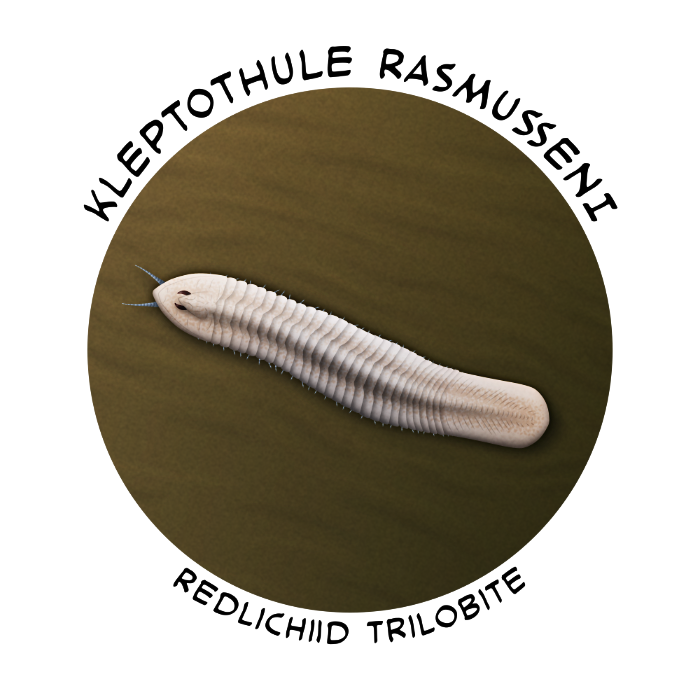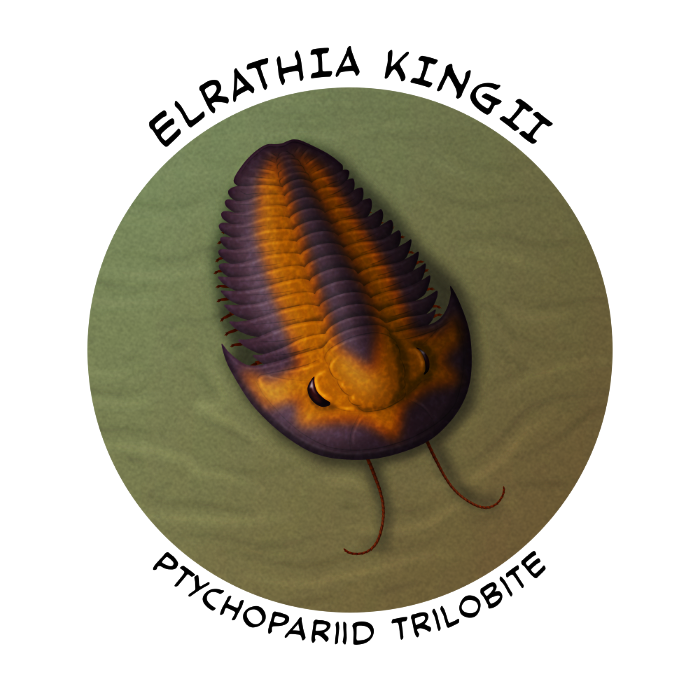The biggest stars of the Cambrian euarthropods, and most of the Paleozoic Era, were of course the trilobites. Known from literally tens of thousands of species spanning over 270 million years, they’re some of the most recognizable and popular fossils.
Trilobites’ exact evolutionary origins and transitional forms are unknown, but they’re thought to have originated in Siberia in the very early Cambrian and their leg anatomy indicates they were a part of the artiopodan lineage. They made a sudden and dramatic entrance to the fossil record about 521 million years ago, appearing fully-formed and rapidly diversifying and spreading all around the world within just a couple of million years.
Their hard calcified exoskeletons made them much more likely to fossilize than soft-bodied animals, with a distinctive three-part body plan consisting of a head shield, three-lobed thorax segments, and a tail shield. Each individual regularly molted their carapace throughout their life, meaning that most trilobite remains are actually empty discarded shells rather than actual carcasses.
Along with being heavily armored arthropod tanks, most species were also able to roll themselves up to defend against predators, and some developed additional elaborate spines and spikes.
Many trilobites had well-developed complex compound eyes with crystalline lenses (and some had elaborate “hyper-compound eyes”), but much of the rest of their anatomy is still poorly known, with only about 21 species found with preserved soft body parts. We do know they had a pair of antennae, biramous limbs with walking legs and feathery gill branches, and at least one species had a pair of cerci at its rear end, but there was probably a lot of soft-part diversity in this massive group that we’ll just never know about.
I could easily spend entire months on trilobites alone, but there’s still a handful of other major groups of Cambrian arthropods to get through as we head towards the final week of this series. So we only really have time for the barest glimpse at their ridiculous variety.
Some of the very earliest trilobites were the redlichiids, which ranged from about 521 to 500 million years ago during the early and mid Cambrian. They were more of an an “evolutionary grade” than a distinct lineage, giving rise to several other major groups during their time.
They were mostly fairly “standard”-looking trilobites with flattened bodies, although some had long spines or unusually large numbers of segments – up to 103 in one species.

Kleptothule rasmusseni was one of the odder-looking redlichiids, found in the Sirius Passet fossil deposits in Greenland (~518 million years ago). About 3cm long (1.2″), it had an elongated and relatively thin many-segmented body and a pointy head, giving it an almost snake-like appearance.
The ptychopariids were another very early group of trilobites but were somewhat longer-lasting, surviving until the end of the Ordovician about 444 million years ago. Much like the redlichiids they were more of an “evolutionary grade” splitting off various other major lineages during their existence – including the proetids, the group that eventually became the last trilobites to ever live at the very end of the Permian.
They were also fairly standard in appearance (with a few eyeless forms and odd exceptions), but they also include one of the most common and familiar trilobites in the world: Elrathia kingii.

Up to around 5cm long (2″), this trilobite is known from massive numbers of specimens (possibly in the millions) from the Wheeler Shale in Utah, USA (~507 million years ago). It had a wide thorax and short spines on the “cheeks” of its head shield, and seems to have been unusually tolerant of low oxygen conditions on the seafloor. It was one the earliest known animals to exploit such an environment, avoiding predators and competition, and it probably either grazed on sulfur-oxidizing bacteria or had evolved a symbiosis with them similar to modern giant tube worms.
